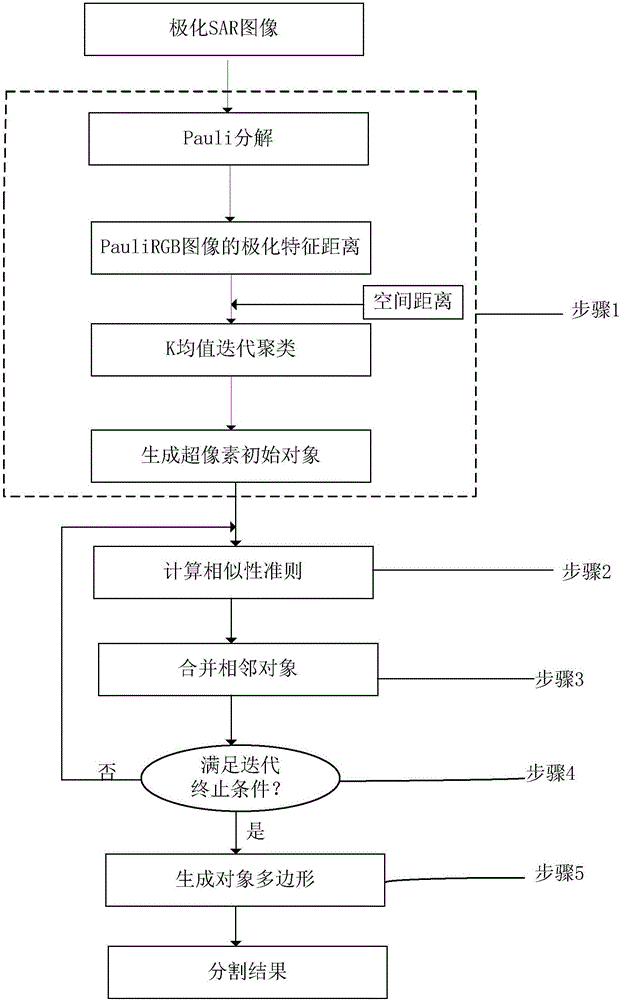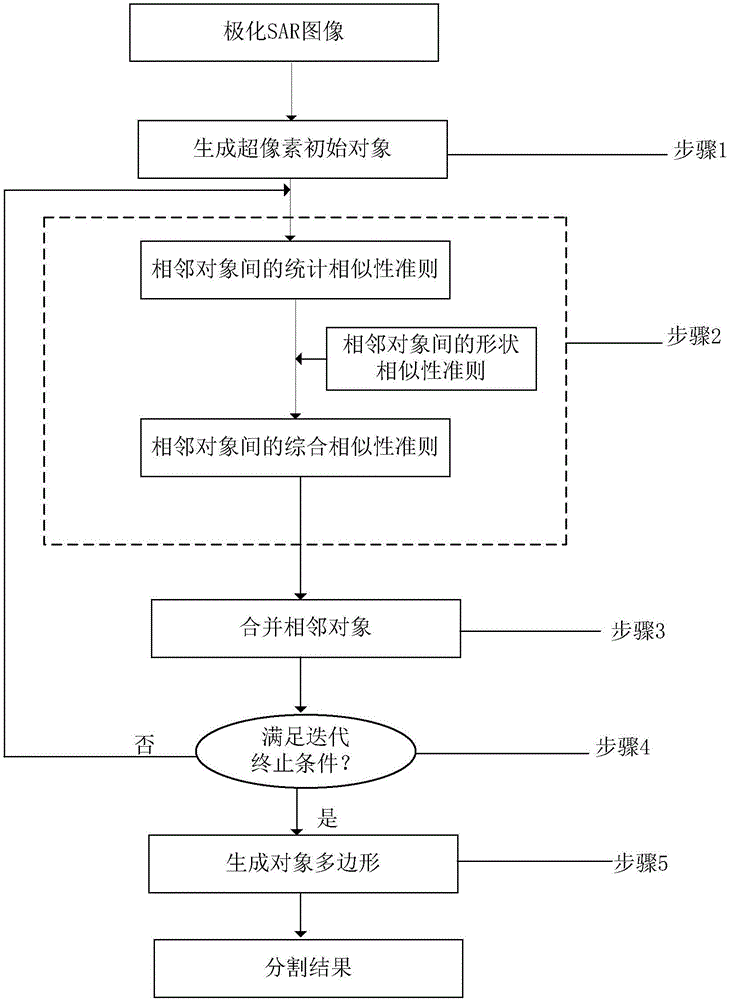Polarized SAR image segmentation method based on superpixels and fractal network evolution algorithm
A fractal network evolution and image segmentation technology, applied in image analysis, image enhancement, image data processing, etc., can solve the problems of reducing the accuracy of parameter estimation, differences in boundaries, and jagged segmentation results, etc., to avoid jagged segmentation boundaries Phenomenon, smooth boundary, consistent effect of segmented objects
- Summary
- Abstract
- Description
- Claims
- Application Information
AI Technical Summary
Problems solved by technology
Method used
Image
Examples
Embodiment 1
[0063] Please refer to figure 1 and figure 2 , the embodiments of the present invention provide a polarization SAR image segmentation method based on superpixels and fractal network evolution algorithm, comprising the following steps:
[0064] Step 1: Perform Pauli decomposition on the polarimetric SAR image to be segmented to generate PauliRGB image, and use the improved simple linear iterative clustering algorithm to generate the initial object;
[0065] The Pauli decomposition is a coherent decomposition that, under the reciprocity condition, decomposes the scattering matrix of a deterministic target into single scattering from a flat surface, dihedral scattering from a corner reflector with a direction angle of 0° and a direction angle of 45° A linear combination of the dihedral scattering of the corner reflectors.
[0066] Since the calculation of the statistical feature similarity between an object and its adjacent objects requires sufficient samples to estimate the p...
Embodiment 2
[0084] Please refer to figure 1 and image 3 , the embodiments of the present invention provide a polarization SAR image segmentation method based on superpixels and fractal network evolution algorithm, comprising the following steps:
[0085] Step 1: For the polarimetric SAR image to be segmented, generate superpixels as the initial object;
[0086] Step 2: Replace the spectral similarity in the fractal network evolution algorithm with the similarity between objects derived based on the statistical model, establish a similarity criterion that combines shape features and statistical features, and calculate the distance between each object in the initial object and adjacent objects. Statistical similarity, constructing a similarity criterion of comprehensive statistical features and shape features between adjacent objects;
[0087] The specific method is:
[0088] Step 2.1: Model the polarimetric SAR data using a statistical model, preferably G 0 distribution model, and est...
Embodiment 3
[0117] Please refer to figure 1 and Figure 4 , the embodiments of the present invention provide a polarization SAR image segmentation method based on superpixels and fractal network evolution algorithm, comprising the following steps:
[0118] Step 1: Perform Pauli decomposition on the polarimetric SAR image to be segmented to generate PauliRGB image, and use the improved simple linear iterative clustering algorithm to generate the initial object;
[0119] The Pauli decomposition is a coherent decomposition that, under the reciprocity condition, decomposes the scattering matrix of a deterministic target into single scattering from a flat surface, dihedral scattering from a corner reflector with a direction angle of 0° and a direction angle of 45° A linear combination of the dihedral scattering of the corner reflectors.
[0120] Since the calculation of the statistical feature similarity between an object and its adjacent objects requires sufficient samples to estimate the p...
PUM
 Login to View More
Login to View More Abstract
Description
Claims
Application Information
 Login to View More
Login to View More - R&D
- Intellectual Property
- Life Sciences
- Materials
- Tech Scout
- Unparalleled Data Quality
- Higher Quality Content
- 60% Fewer Hallucinations
Browse by: Latest US Patents, China's latest patents, Technical Efficacy Thesaurus, Application Domain, Technology Topic, Popular Technical Reports.
© 2025 PatSnap. All rights reserved.Legal|Privacy policy|Modern Slavery Act Transparency Statement|Sitemap|About US| Contact US: help@patsnap.com



